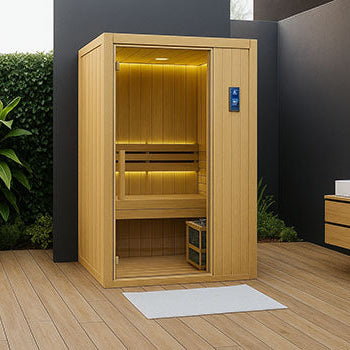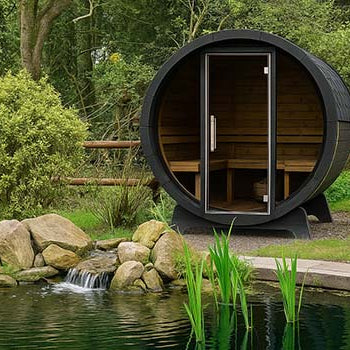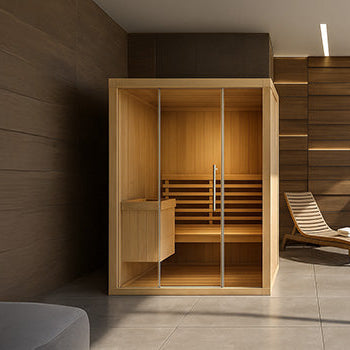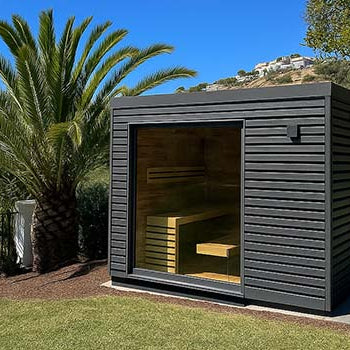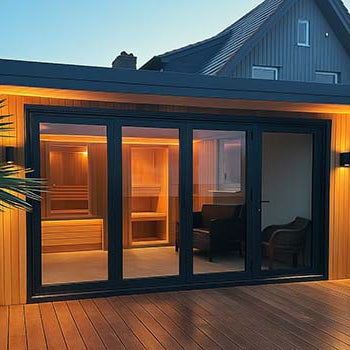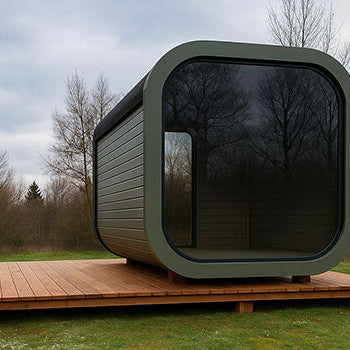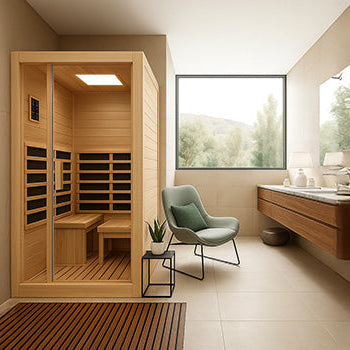Ever stumbled into a sauna and thought, "Is it supposed to feel like I'm baking or swimming?" Welcome to the magic of the 200 Rule. Short answer? Add your sauna’s temperature (in °F) and humidity (%), and aim for a total around 200. It’s a simple formula with surprisingly big results.
From your cosy indoor hideaway to a breezy outdoor barrel sauna, this rule helps strike the perfect balance between sizzle and soothe. Keep reading to learn how this quirky calculation could change your sauna game.

Understanding the Sauna "Rule of 200"
The 200 Rule isn’t some rigid science experiment—it’s more like a cheat code for comfort. It's used by traditional sauna lovers and modern wellness buffs to create just the right mix of heat and moisture.
Too dry, and you feel like a lizard on a rock. Too humid, and it’s like you’re boiling soup—with yourself in it. This rule helps you hit that perfect middle ground where sweat, relaxation, and health benefits all come together.
What is the Rule of 200 Formula? (Temp °F + Humidity % ≈ 200)
Here’s how it works:
Take your sauna’s temp in Fahrenheit, add the humidity percentage, and aim for around 200.
Simple math. Big impact.
So if your sauna’s at 180°F and the humidity’s at 20%, boom—you’re golden. This sweet spot helps your body sweat efficiently without feeling overwhelmed or parched.
The Purpose Behind the Rule
At first glance, it may sound like just another wellness fad. But behind that 200 number is a smart way to improve how your body handles heat.
Think of it as setting the stage for a performance—your body needs the right lighting, temperature, and mood to shine.
Balancing Heat Intensity and Humidity for Comfort
Ever walked into a sauna and felt your nose hairs curl? That’s usually from too much dry heat.
On the flip side, a super-damp sauna can feel heavy, like sitting in a swamp with your clothes on.
By keeping that total near 200, you get warmth that’s intense but not overwhelming. It feels deep and cleansing, not just sweaty for the sake of it.
Avoiding Conditions That Feel Too Dry or Too Damp
This rule is your shield against extremes. Too dry, and your skin starts begging for moisture. Too humid and you can’t breathe properly.
Following the 200 Rule is like tuning an instrument—get the balance right, and everything just flows better.
How to Apply the Rule of 200 in Practice

Alright, enough theory. Let’s get into the fun part—making it work for you.
You don’t need lab equipment or a wellness coach. Just a little common sense, a thermometer, and some attention to how your body feels.
Example Combinations (e.g., 180°F + 20%, 160°F + 40%)
Here are a few crowd-pleasing combos to try:
-
180°F + 20% = a dry, intense heat
-
170°F + 30% = a more balanced middle ground
-
160°F + 40% = gentler warmth with a nice steamy touch
Each mix feels different, but they all hover around that magic 200. Test them out to see which one suits your vibe.
Adjusting Temperature and Humidity Based on Preference
Maybe you're someone who loves that dry Finnish-style heat. Or maybe you want a steamy jungle vibe—no judgement.
The beauty of the 200 Rule is how easily it flexes. If you crank the heat up, drop the humidity a bit. Want more steam? Lower the temp and raise the moisture.
It’s like cooking—season it to your taste.
Creating Steam (Löyly) to Influence Humidity
In a traditional sauna, a scoop of water over hot stones creates what the Finns call löyly. That’s the steamy cloud that rolls over you like a warm hug.
Every splash adds humidity, changing the experience instantly. It’s the easiest way to tweak your sauna session on the fly—no buttons or dials needed.
Traditional outdoor saunas often embrace this practice, offering a classic, authentic experience.
Is the Rule of 200 a Strict Requirement?
Here’s the truth: the 200 Rule isn’t gospel—it’s a guide. Like a map, it points you in the right direction, but how you get there is up to you.
A Guideline, Not a Law
Think of it like "serve chilled" on a bottle of wine. Nice to follow, but you won’t ruin anything by tweaking it.
The goal isn’t precision—it’s comfort and consistency. Some people like it hotter and drier, others like it gentler and steamier. The 200 Rule just helps avoid extremes.
Personal Preference and Sauna Type Considerations (Less relevant for Infrared)
If you’ve got an infrared indoor sauna, this rule might not apply much. Infrared heat warms your body, not the air, so humidity isn’t part of the equation.
But for traditional indoor saunas or outdoor sauna cabins? It’s a gem. It helps you tailor the environment to your body’s rhythm.
Conclusion: Using the Rule of 200 for a Better Sauna Experience

At the end of the day, saunas aren’t just about sweating—it’s about how you sweat. And the 200 Rule? It’s like a backstage pass to a better session.
By balancing heat and humidity, you create a space where your body can relax, recharge, and reset. From a garden sauna to a minimalist indoor retreat, this rule makes every session count.
So next time you're heating things up, remember: you don’t have to overthink it. Just aim for 200—and let the steam do the rest.
